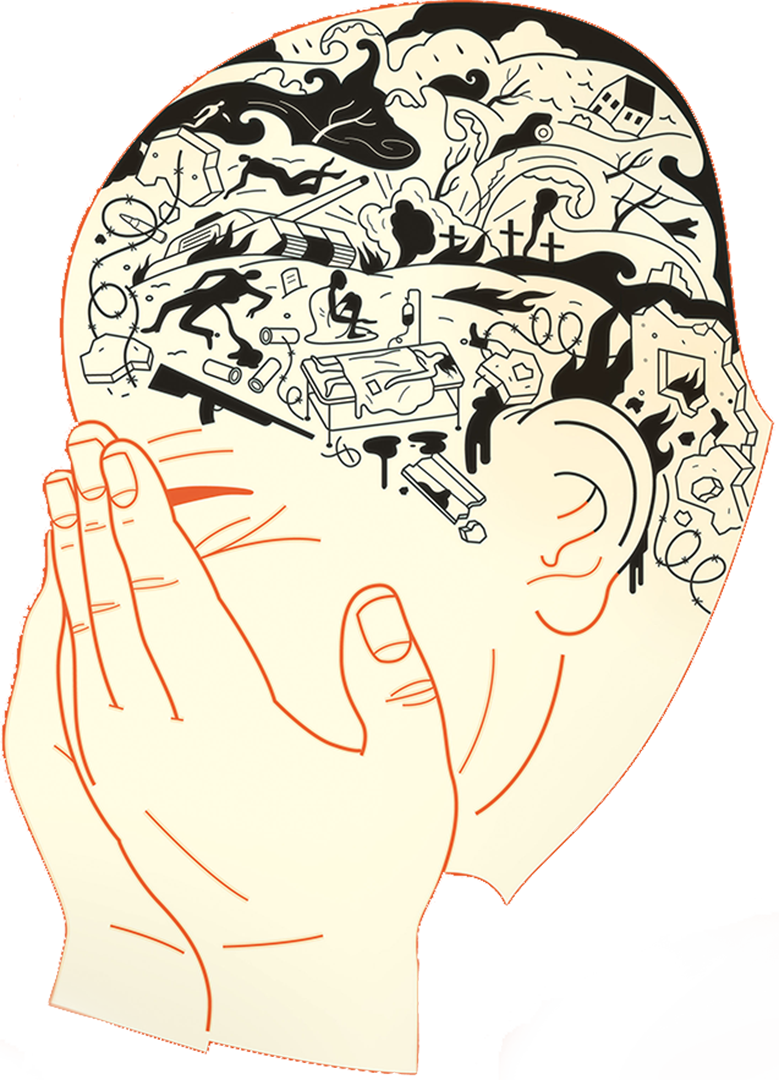WATCH COMMENCEMENT LIVE ON SATURDAY, DECEMBER 14.
Livestream access begins at 9:15 a.m.

“Suffering is a part of life, but needless suffering is just not OK.”
— Lori Russell-Chapin

“Suffering is a part of life, but needless suffering is just not OK.”
— Lori Russell-Chapin
Post-traumatic stress disorder (PTSD) is often the brain’s normal reaction to experiencing or witnessing a terrifying event or situation. It may manifest in reliving the events through flashbacks, nightmares, anxiety and hyper-vigilance.
Nancy Sherman has worked with abuse and assault survivors throughout her career, but it was her time in New Orleans helping victims of Hurricane Katrina that helped demonstrate the devastating effects of PTSD on a large scale.
“I had one man who watched his girlfriend slip away into the water (during Katrina) … he couldn’t help her,” the professor in education, leadership and counseling said. “I’ve had clients who had PTSD as a result of being in a bad automobile crash. It’s a thing nobody is prepared for. Although reactions to traumatic events range in severity, even the most acute responses are natural after experiencing a traumatic event that is out of the bounds of normal experience.”
According to the National Center for PTSD, an estimated seven or eight people out of a hundred will experience PTSD at some point in their lives, with women more likely to develop it than men. Military veterans are uniquely prone to developing PTSD, with symptoms showing up from a few months to years later, affecting relationships and the ability to function in everyday life.
“It’s really an interesting diagnosis because two people can be at the same event and one person will get PTSD and the other won’t,” said Lori Russell-Chapin, co-director of the Center for Collaborative Brain Research and a professor in education, leadership and counseling. She and Sherman, along with Celia Johnson, professor of teacher education emerita, are part of a Bradley effort to study three non-invasive treatments for PTSD.
Russell-Chapin’s father was a World War II pilot, shot down and wounded as the only survivor of his plane’s crew. She suspects that combination of factors left him with PTSD.
“I’ve had clients who had PTSD as a result of being in a bad automobile crash. It’s a thing nobody is prepared for.”
Working with veterans from the Vietnam era to the present, one treatment in the Bradley project focuses on RTM (reconsolidation of traumatic memories), and is part of a larger, nationwide effort.
“We got interested in (RTM) because it’s quick, which would mean cost-effective,” Sherman said.
The other two treatments being studied at Bradley aren’t part of the nationwide effort — EMDR (eye movement desensitization and reprocessing) and neurofeedback.
“All of these have shown to be effective; we’re hoping to find which is the most effective in reducing symptoms. Our work is unique because we’re testing three treatments.”
RTM is an imagery exercise to retrain the brain and its responses. Sherman said she has successfully used RTM in helping people overcome snake phobias.
EMDR is not a new treatment — it has subjects track a light or some other moving object while discussing the troubling situation. It works to regulate activity between the left and right hemispheres of the brain. Neurofeedback uses electrodes placed on the scalp to monitor brain activity while subjects view a picture or scene. All of these noninvasive methods help the brain learn to self-regulate.
“As a counselor, my world is making a difference in other people’s lives,” Sherman said. “I (believe) this is such an important thing if we can add to the body of knowledge that tells how we can effectively treat PTSD so people can live their lives.”
Russell-Chapin said the amygdala, the part of the brain which primarily processes memory, decision-making and emotional responses (such as anxiety, aggression and fear), is activated during traumatic events and may actually get larger with repeated traumas.
“So the next time something happens, you react from your amygdala, not from the prefrontal cortex which is responsible for executive reasoning responses.”
She added there is evidence of brain network communication problems. With PTSD, the connection between the prefrontal cortex and the amygdala becomes lost, so the prefrontal cortex may get smaller in volume if it isn’t used as much. Many people with PTSD are treated with medication, which can have side effects. Russell-Chapin compared that to a Band-Aid, treating symptoms and not the underlying causes.
“Some of the things our veterans have to see and have to do, no one should have to see and do,” Russell-Chapin said. “Yet they come back and we expect them to be able to go to Walmart or some place and function normally.”
Board-certified in neurofeedback, she uses quantitative 19-panel EEGs for pre- and post-treatment testing that show brain map areas where the brain is dysregulated and not working efficiently.
“What’s remarkable about this treatment is you’re attacking the problem at the source,” she said. “You can see in the brain when things are not functioning.”
Sherman said paper-and-pencil tests measuring the severity of a participant’s symptoms also are used before and after treatment. So far, all subjects, regardless of treatment group, have improved.
Finding participants has been a challenge, however. Despite reaching out to the Department of Veterans Affairs and other groups, the study still has a few open spots. Participants are paid a $100 stipend but Russell-Chapin noted many times veterans are reluctant to accept it and just want to help or serve others.
Because live subjects are involved, the Institutional Review Board from the University of Illinois College of Medicine at Peoria provides oversight, and there are other regulatory reviews.
“If we can have some results with our small study, and begin to have better research and share it with the world, I think that’s so helpful and encouraging,” Russell-Chapin said. “It’s been fascinating, frustrating, sad. I’ve heard stories … it’s tragic. Suffering is a part of life, but needless suffering is just not OK.”
Post Your Comments